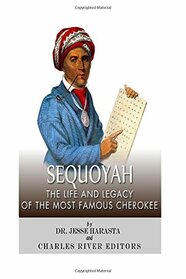Before reading this, I wasn't aware that the Cherokee originally lived in the Great Lakes region and moved to the southeastern part of America about 6000 years ago. Originally, the Cherokee language was part of the Iroquoian language family. After the Cherokees moved south, it changed significantly. "Glottochronology" was a new word I learned; it is a way of tracking linguistic changes in related languages over time. It is a way of finding out how long people sharing a root language have been separated.
Although the Cherokee created a similar life to the white men who lived near them, including printing presses, villages, plantations with slaves, laws, etc., the US government still made the Cherokee move to Oklahoma. This is the group that endured the "Trail of Tears."
I was shocked to learn that as late as the 1950s, American Indians were being sent to boarding schools to become assimilated. The net result was that the Cherokee went from being 75% bilingual (Cherokee and English-speaking) to 5% bilingual in a single generation.
The good news is that Sequoyah was honored in his lifetime; after analysis, it was determined that Cherokee was uniquely suited to a syllabary (versus an alphabet). The author takes some time explaining the difference between the two. The Sequoia trees of California are named after this celebrated Indian. It is often mentioned that Sequoyah was the only illiterate person who still managed to create a writing system for his native tongue. Then the author brings up another man who created a written language, which I thought unnecessary to mention (this story was about the significant accomplishment of an important Indian).
Although the Cherokee created a similar life to the white men who lived near them, including printing presses, villages, plantations with slaves, laws, etc., the US government still made the Cherokee move to Oklahoma. This is the group that endured the "Trail of Tears."
I was shocked to learn that as late as the 1950s, American Indians were being sent to boarding schools to become assimilated. The net result was that the Cherokee went from being 75% bilingual (Cherokee and English-speaking) to 5% bilingual in a single generation.
The good news is that Sequoyah was honored in his lifetime; after analysis, it was determined that Cherokee was uniquely suited to a syllabary (versus an alphabet). The author takes some time explaining the difference between the two. The Sequoia trees of California are named after this celebrated Indian. It is often mentioned that Sequoyah was the only illiterate person who still managed to create a writing system for his native tongue. Then the author brings up another man who created a written language, which I thought unnecessary to mention (this story was about the significant accomplishment of an important Indian).




